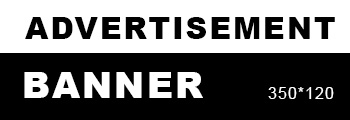
Nigeria’s N54. 99trn budget suffers setback as oil drops to $66 per barrel
The execution of Nigeria’s N54. The $ 99 trillion budget suffered a major setback as the crude price dropped to $66 per barrel from $70 per barrel, indicating a 5.7 percent decrease, yesterday.
This was even as Nigeria’s oil output, including condensate and foreign exchange, stood at 1.8 million barrels per day and more than N1,500 per dollar, respectively.
The nation’s budget was based on 2.06 million barrels per day (bpd), N1,500 per dollar, and $75 per barrel oil output, exchange rate, and oil price, respectively.
However, in an interview with Vanguard yesterday, the National President of Oil and Gas Services Providers Association of Nigeria, Mazi Colman Obasi, said: “The global oil market has been unstable for awhile. The instability has impacted the 2025 budget execution. The government has to look beyond oil in funding the budget.”
Similarly, Prof Wumi Iledare, the Executive Director, Foundation for Petroleum and Energy Industry Economics and Policy Advocacy, said: “The key budget anchors—production volume, oil price, and costs—remain highly unpredictable, with significant deviations from the initial assumptions.
“This clearly shows that the budget process needs serious improvement. However, the global oil market remains very unstable. Oil prices will rise but the prices will not be stable. This will continue to impact on the implementation of the budget in the second half of 2025.”
On his part, the Group Head of Research at Budgit, Vahyala Kwaga, said: “The oil production benchmark was not met and will likely not be met due to legacy issues in the Nigerian oil sector. Low production capacity, low maintenance of oil facilities, vandalism and oil theft still plague the sector till today. Moreover, the foreign investments in the sector have reduced (many foreign investors have moved to the deep offshore).
“The average oil price of $75 was not met (due to global conflicts and the actions of large economies), but can be met in the latter half of the year due to geopolitical factors (conflict involving Iran, increased demand from China, etc.).
“The federal government has been advised to be pessimistic in their oil price forecasts, so as to leave room for higher revenue where the forecasts turn out to be incorrect. Yet, the government consistently predicts very high prices. In any case, the global price of oil has little to do with the Nigerian government.
“The official naira to dollar exchange rate was met in the first half of the year; what was not met was the parallel market rate. However, the spread (i.e., the difference between the official and parallel markets) has been relatively stable and low. Unlike in former times where the spread was in excess of N200 and above, the spread has largely remained below N200. Though it must be reiterated that the move of the official rate was a deliberate decision of the monetary authority and not a market led devaluation.”
Recently, the Director General, Lagos Chamber of Commerce and Industry, LCCI, Dr. Chinyere Almona, said: “The non-realisation in the year’s first half targets reflects deep-rooted structural and policy-related challenges. In the first half of 2025, oil production consistently underperformed its targets. This was due to persistent issues, including pipeline vandalism, crude theft, underinvestment, and operational inefficiencies, which constrained output. Unless the government accelerates security reforms in oil-producing areas, incentivizes investment in upstream assets, and fast-tracks regulatory approvals, achieving the 2.06 million bpd target in the second half remains unlikely.
“Global oil prices have fluctuated within a relatively favorable range, averaging between $70 and $67 per barrel in the year’s first half. The price of oil has remained below $75 since March to date. Geopolitical tensions and OPEC+ production management caused this. Looking ahead, while the $75 benchmark is still attainable, downside risks exist, particularly from a potential global economic slowdown or increased output from non-OPEC producers. Price volatility is likely to persist, but there is cautious optimism that this benchmark may be met or slightly exceeded.
“The exchange rate has significantly exceeded the N1,500/$ benchmark, driven by persistent forex illiquidity, weak capital inflows, and investor uncertainty. Stabilizing the naira around this rate in the second half will require urgent and coordinated actions, including credible monetary tightening, increased FX supply from non-oil sources, improved remittance channels, and transparent CBN interventions. Without such measures, full convergence to the budgeted exchange rate is improbable.”


